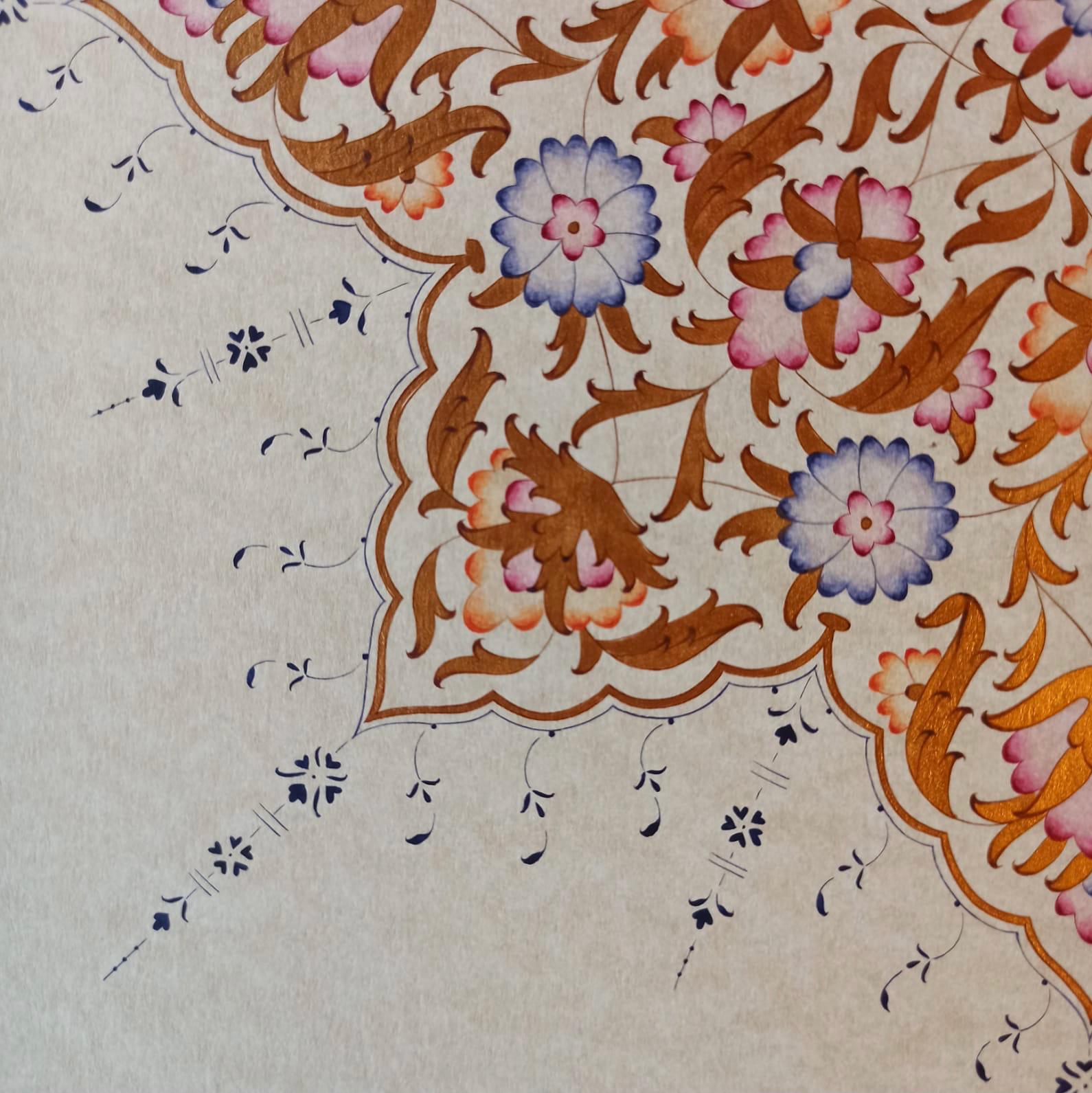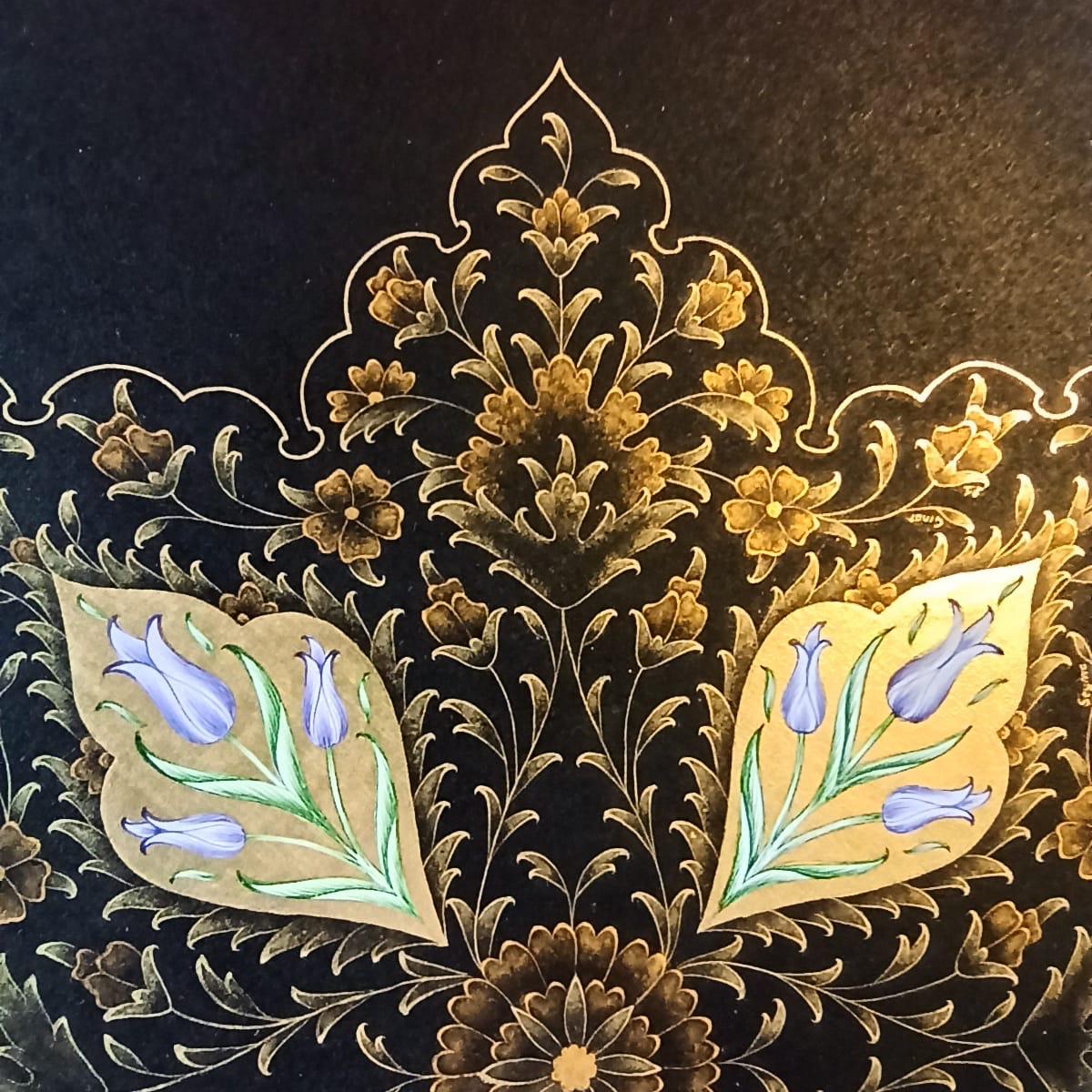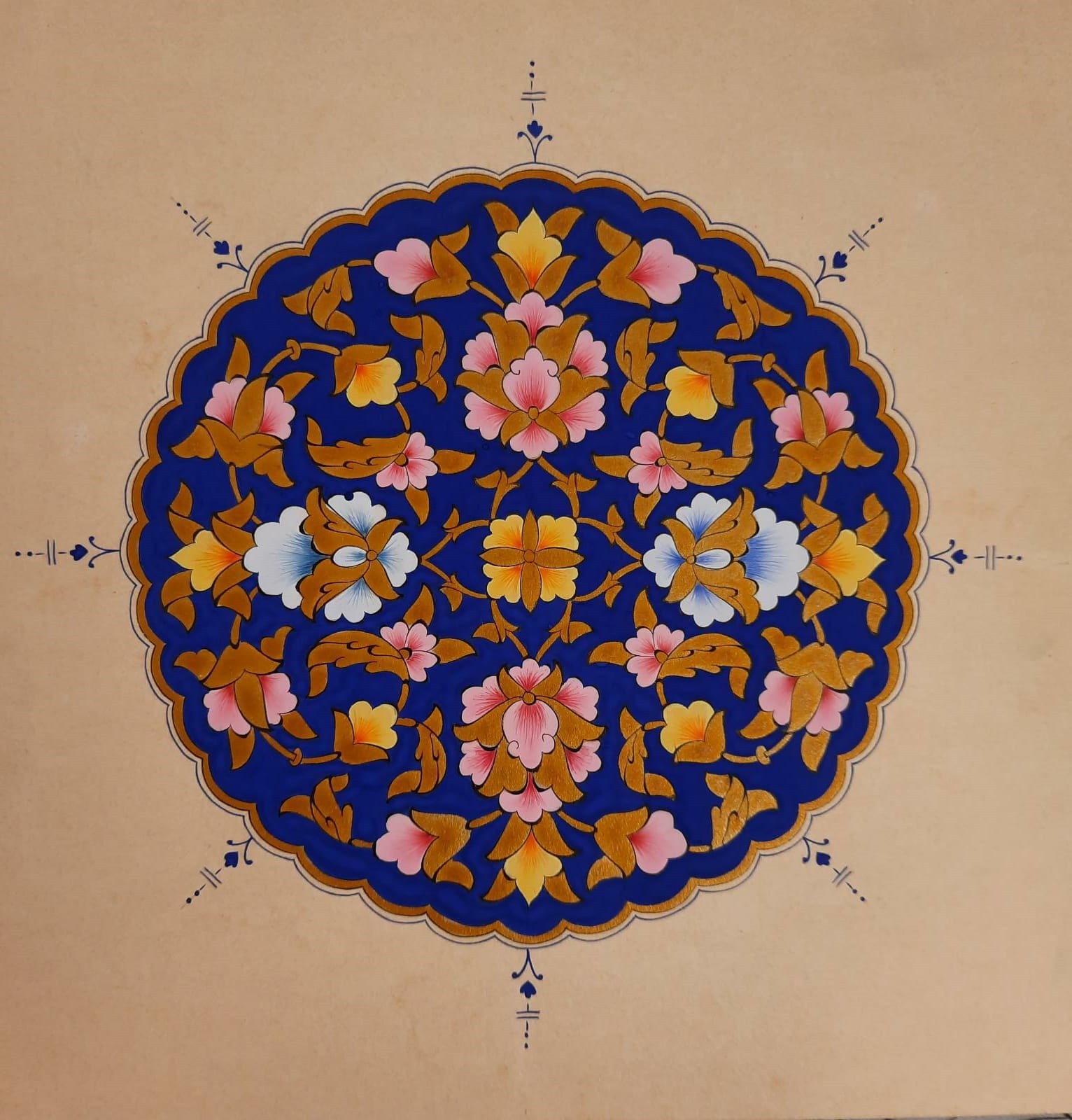Bordures
Bordure decorations are placed on the edges of a design, around calligraphy work, and on the pages of manuscripts. When there is more than one bordure, the inner bordure is called arasuyu and the outer bordure is called kenarsuyu. Kenarsuyu bordures are significantly larger than arasuyu bordures and form the most outer frame of a design. The choice of bordure depend on the design it aims to illuminate. The bordure should not overwhelm the design, nor should it be too thin that it fails to carry the design.
Techniques
Types of Bordures
The main types of bordure patterns are zencerek patterns, threaded patterns, and symmetrical patterns. Zencerek patterns are braids and knots that are composed of points and lines. Threaded patterns are drawn on a single, double, or triple thread and are repeated at equal intervals. Symmetrical bordure patterns are drawn once and repeated throughout the bordure.
Threaded Patterns
These are ancient and historically popular patterns, often drawn with rumi motifs and seen across the middle east and the far east. Thread patterns do not necessarily have symmetry in the pattern, though using symmetry makes it easier to repeat a pattern.
Illuminate the Frame
A single thread (tekiplik) pattern is created by drawing a sine curved line, with full or half circles repeated at similar intervals. This pattern represents a single stem and therefore only the same type of flower motif can be used throughout the bordure.
What`s Next
Once the design is completed, you can start painting it.
Gold is the main color used in Tezhip, symbolizing light and the reflection of the sun. Gold is also a pure element that does not dissolve or burn, representing luminescence and life. Another prominent color in Tezhip is blue, symbolizing the sky and Allah`s infinite mercy, and green, which stands for peace and tranquility. This makes turquoise the color of eternal peace, which is often used in Islamic arts.





